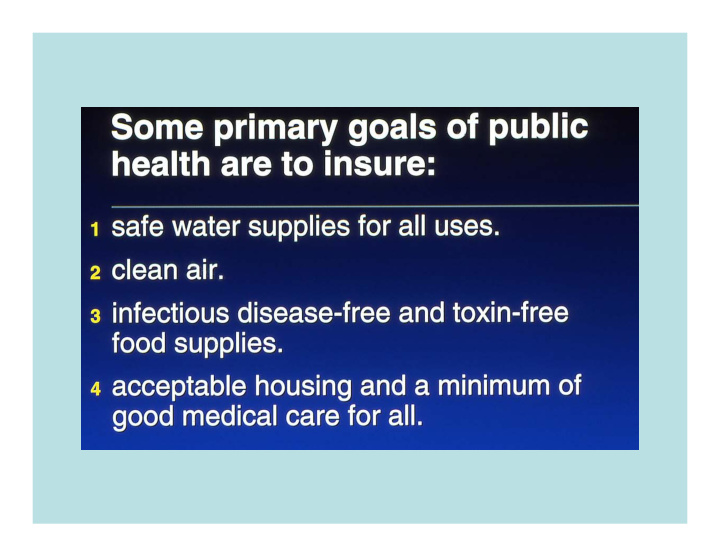



2-3 Billion More People in 50 Years 10 9 hectares is equivalent to the size of Brazil
What are the environmental health problems the world will have to face when another 2-3 billion people are added to it?
Who is this man and why is he smiling? (He’s Benoit Mandelbrot)
The Mandelbrot Set
Why is this man sleeping?
Lymphocyte
Nuclear Envelope
Chromosomal DNA
Evolutionary and Genetic Relationships
Some General Ecological Principles
General Scheme For Most Life On Earth
from Odum, Fundamentals of Ecology Saunders Pubs. 1971
from Odum, Fundamentals of Ecology Saunders, Pubs.1971
Trophic Levels And Energy Flow From Odum, Fundamentals of Ecology , Saunders Pubs.1971
Nature Abhors A Vacuum from Odum, Fundamentals of Ecology , Saunders, Pubs. 1971
Evolution of Darwin’s Finches
Tolerance Limits from Miller, Living In The Environment Thompson, Pub.
Trophic Levels and Food Webs from Miller, Living In The Environment Thompson, Pub.
Trophic Levels and Food Webs (who’s eating who) Science Magazine
Food Pyramids from Miller, Living In The Environment , Thompson, Pub .
Courtesy NASA
The Earth At Night
Physical Determinants Of Ecosystems Mean Daily Temperature from Miller, Living In The Environment Thompson Pub . Annual Precipitation
Annual Mean Precipitation
Ecozones
Land Use (in percentage)
Science Magazine
Just When We Thought We Understood How Things Worked!
Determining the course grade: 25% - Midterm 25% - Final 30% - 10 abstracts. Each one must be a minimum of 300 and not exceed 500 words in length. 20% - 2 oral presentations Writing an abstract : The abstract is based on internet research of a question supplied by the presenter. Examples of faculty-generated abstracts can be found on Courseworks. Each student is required to submit 10 abstracts by e-mail to their TA. They will be graded and returned ASAP by e-mail. One of three grades will be given: Good, Fair, Poor. Three internet sites are required to be used for all 10 abstracts: www. http://ci.columbia.edu/ci/eseminars/1111s_detail.html www.EPA.gov and one other.gov site – e.g., www.USDA.gov; www.NIH.gov; www.CDC.gov; www.NOAA.gov; www.USGS.gov
Recommend
More recommend